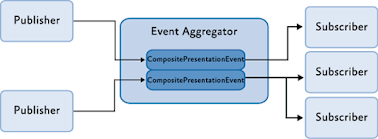· 𝐃𝐨𝐦𝐚𝐢𝐧 #𝟏
- 𝐈𝐝𝐞𝐧𝐭𝐢𝐭𝐲 𝐚𝐧𝐝
𝐀𝐜𝐜𝐞𝐬𝐬
o
Azure Active Directory:
Password-less & MFA, Hello for Business, Authenticator App, FIDO2 Keys,
Azure AD PIM, B2B & B2C. https://lnkd.in/grPgTT4R
o
Identity Protection:
Leaked Credential Protection. https://lnkd.in/gdgMJZNF
o
Identity Governance:
Identity, Access, and Privileged Access Lifecycle, Entitlement Management,
Access Requests, Workflow, Policy and Role Management, Governance Enforcement. https://lnkd.in/gbVEWcQs
o
Defender for Identity:
User Behavior and Activities, Investigate Alerts, AD FS Protection, Lateral
Movement Detection. https://lnkd.in/g53ave8s
· 𝐃𝐨𝐦𝐚𝐢𝐧 #𝟐
- 𝐒𝐞𝐜𝐮𝐫𝐢𝐭𝐲 𝐎𝐩𝐞𝐫𝐚𝐭𝐢𝐨𝐧𝐬
o
Microsoft 365 Defender:
Extended Detection and Response (#XDR). Endpoint, Office365, Identity, and more
https://lnkd.in/gXFnX2PQ
o
Defender for Cloud:
Cross Cloud XDR. https://lnkd.in/gZfP3QdF
o
Microsoft Sentinel:
Cloud Native SIEM, SOAR. https://lnkd.in/gnd-6c-u
· 𝐃𝐨𝐦𝐚𝐢𝐧 #𝟑
- 𝐄𝐧𝐝𝐩𝐨𝐢𝐧𝐭 𝐚𝐧𝐝
𝐃𝐞𝐯𝐢𝐜𝐞 𝐒𝐞𝐜𝐮𝐫𝐢𝐭𝐲
o
Microsoft Endpoint
Manager: Intune and Configuration Manager. https://lnkd.in/g4Vdfej2
o
Microsoft Defender for
Endpoint: https://lnkd.in/g3KPMPCx
· 𝐃𝐨𝐦𝐚𝐢𝐧 #𝟒
- 𝐇𝐲𝐛𝐫𝐢𝐝 𝐈𝐧𝐟𝐫𝐚𝐬𝐭𝐫𝐮𝐜𝐭𝐮𝐫𝐞
o
Defender for Cloud:
Cross Cloud XDR. https://lnkd.in/gZfP3QdF
o
Azure AD App Proxy:
Secure Remote Access. https://lnkd.in/g2DDNYUy
o
Azure Arc: Hybrid and
Multicloud Management. https://lnkd.in/gtaiiPgM
o
Azure Stack: Hybrid and
Edge Computing. https://lnkd.in/gvKNyKQD
o
Azure Firewall: https://lnkd.in/gVnVNJbB
o
Azure WAF: https://lnkd.in/gpQCgdNc
o
DDoS Protection: https://lnkd.in/gF796HMv
o
Azure Key Vault: https://lnkd.in/gqMuSJ4S
o
Azure Bastion: Secure
RDP/SSH, Secure VM. https://lnkd.in/gmdyEb5W
o
Azure Lighthouse: https://lnkd.in/gHHUVyJn
o
Azure Backup: https://lnkd.in/gzBpjFXs
o
Express Route: https://lnkd.in/gGBtuq5m
o
Private Link: https://lnkd.in/gzZVJ_gY
· 𝐃𝐨𝐦𝐚𝐢𝐧 #𝟓
- 𝐈𝐧𝐟𝐨𝐫𝐦𝐚𝐭𝐢𝐨𝐧
𝐏𝐫𝐨𝐭𝐞𝐜𝐭𝐢𝐨𝐧
o
Microsoft Purview: https://lnkd.in/g289yg_D
o
Compliance Manager: https://lnkd.in/gprm3xD4
· 𝐃𝐨𝐦𝐚𝐢𝐧 #𝟔
- 𝐏𝐞𝐨𝐩𝐥𝐞 𝐒𝐞𝐜𝐮𝐫𝐢𝐭𝐲
o Attack Simulator: Simulation Training Platform. https://lnkd.in/g3xyhZff
o
Insider Risk Management:
https://lnkd.in/gfhxQEti
o
Communication
Compliance: https://lnkd.in/gKJd4HRm
· 𝐃𝐨𝐦𝐚𝐢𝐧 #𝟕
- 𝐈𝐨𝐓 𝐚𝐧𝐝 𝐎𝐩𝐞𝐫𝐚𝐭𝐢𝐨𝐧𝐚𝐥
𝐓𝐞𝐜𝐡𝐧𝐨𝐥𝐨𝐠𝐲
Azure
Sphere: IoT and OT Security Services. https://lnkd.in/gFMQRZB6
















